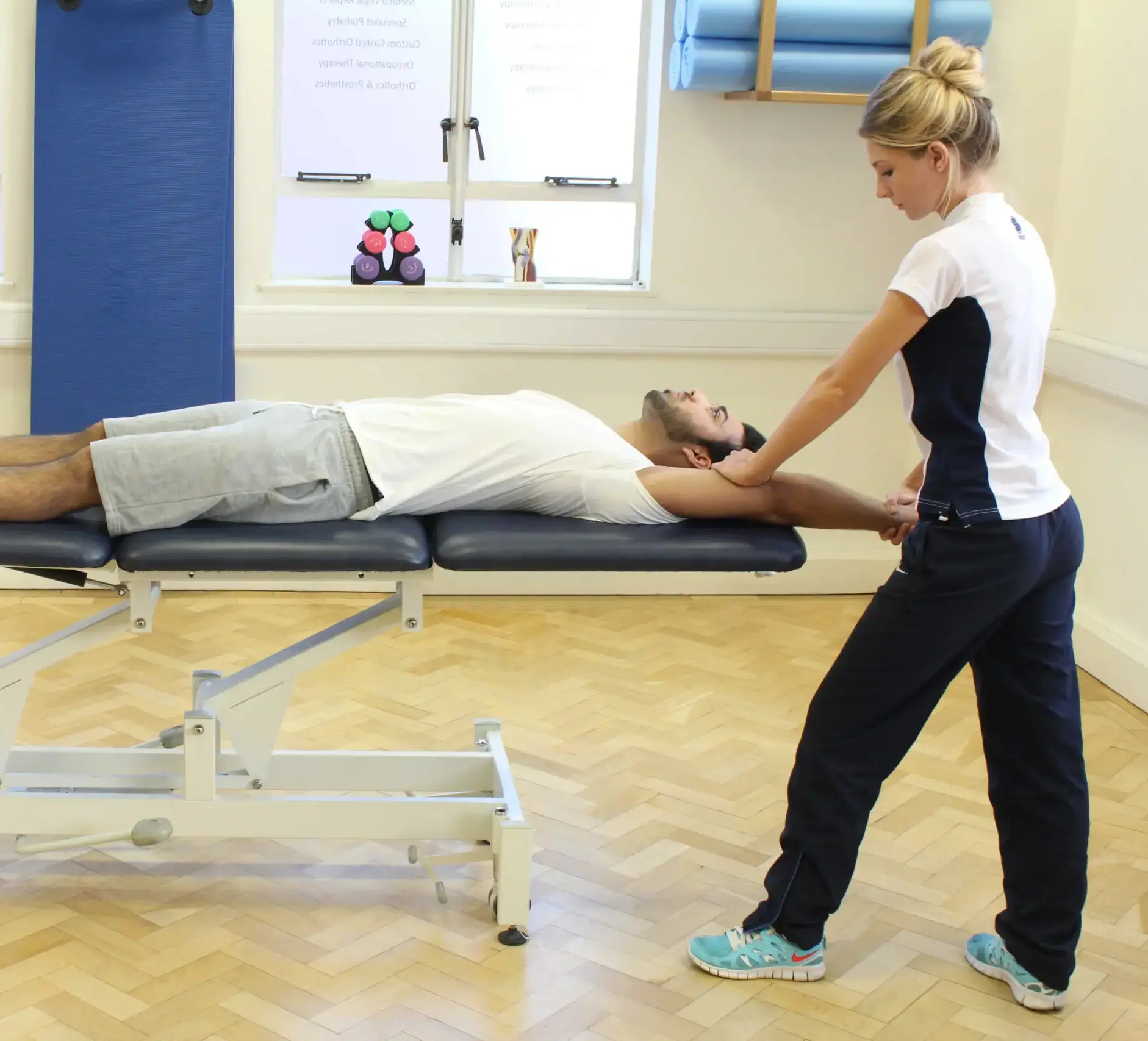Reverse shoulder replacement is becoming more common for patients with severe shoulder pain, rotator cuff tears, or arthritis. If you’re an active adult or athlete in Denver or Centennial, you may be wondering: “Can I ever do push-ups again after surgery?”
The short answer: Yes, but with caution, progression, and modifications. Let’s break it down
What Is a Reverse Shoulder Replacement?
In a traditional shoulder replacement, the surgeon replaces the damaged ball and socket with artificial parts in the same orientation as your natural anatomy.
In a reverse shoulder replacement, the ball and socket are switched. This allows the deltoid muscle to take over movement when the rotator cuff is too damaged to function.
This surgery can restore motion and reduce pain, but it also changes the way your shoulder absorbs and transfers force. That’s why returning to high-stress movements like push-ups requires a careful plan.
Why Push-Ups Are Challenging After Surgery
Push-ups require:
- Shoulder stability against body weight.
- Strong rotator cuff and deltoid activation.
- Core engagement and scapular control.
After reverse replacement, the shoulder is less tolerant of repetitive compression and high loads. Doing standard push-ups too soon can:
- Stress the implant.
- Cause pain or instability.
- Delay recovery progress.
Timeline for Push-Ups After Reverse Shoulder Replacement
Every patient is different, but here’s a general timeline:
Phase 1: Early Recovery (0–6 weeks)
- Focus: Healing and passive range of motion.
- No pushing or lifting.
- Sling often required for comfort.
Phase 2: Strength Foundation (6–12 weeks)
- Begin gentle deltoid and scapular strengthening.
- Light resistance bands and isometrics.
- No push-ups yet.
Phase 3: Modified Push Exercises (12–16 weeks)
- Wall push-ups or countertop push-ups.
- Partial range, controlled reps.
- Monitor pain and stability.
Phase 4: Progressive Loading (4–6 months)
- Incline push-ups, gradually lowering the angle.
- Light chest presses with dumbbells or cables.
- Focus on form and stability, not max reps.
Phase 5: Long-Term Training (6+ months)
- Some patients may safely attempt modified floor push-ups.
- Many remain on incline versions permanently for safety.
Work closely with your Denver physical therapist to individualize this plan.
Safer Push-Up Alternatives
If you love training your chest and upper body, there are safer ways than traditional push-ups:
- Wall Push-Ups – Easiest, beginner-friendly.
- Incline Push-Ups – Hands on a bench or box, less shoulder stress.
- Resistance Band Chest Press – Standing or lying down.
- Seated Cable Press – Controlled strength without strain.
- Floor Press – Lying on your back, pressing dumbbells.
Benefits of Modified Push-Ups After Surgery
- Maintains upper-body strength.
- Promotes scapular stability.
- Builds endurance for daily activities like pushing doors, getting out of chairs, or carrying groceries.
- Keeps athletes engaged in safe training during rehab.
Common Mistakes to Avoid
- Starting push-ups too soon.
- Ignoring pain or popping sensations.
- Using poor form (elbows flaring, shoulders collapsing).
- Doing too many reps without control.
FAQs About Push-Ups After Shoulder Surgery
1. Can I ever do “normal” push-ups again?
Some patients can, but many do better sticking with incline or modified versions to protect the implant.
2. What about bench press instead of push-ups?
Bench press can sometimes be safer because the shoulder is supported, but only under guidance.
3. How do I know if I’m ready?
If you can do wall and incline push-ups without pain and your therapist clears you, you may be ready for more.
Why Physical Therapy Matters
Trying to return to workouts on your own can lead to setbacks. At TruStrength Performance and Rehab, we:
- Create custom rehab plans for active adults and athletes.
- Teach safe modifications to keep you training.
- Address strength, mobility, and whole-body resilience.
Learn more about our approach to shoulder pain treatment in Denver.
Final Takeaway
Push-ups after reverse shoulder replacement are possible, but not for everyone — and rarely in their traditional form. Modified versions, progressive loading, and expert guidance are key.
If you’re recovering from surgery in Centennial or Denver, our physical therapists can help you return to strength safely.
Book an appointment today at TruStrength Performance and Rehab and get back to the workouts you love.



